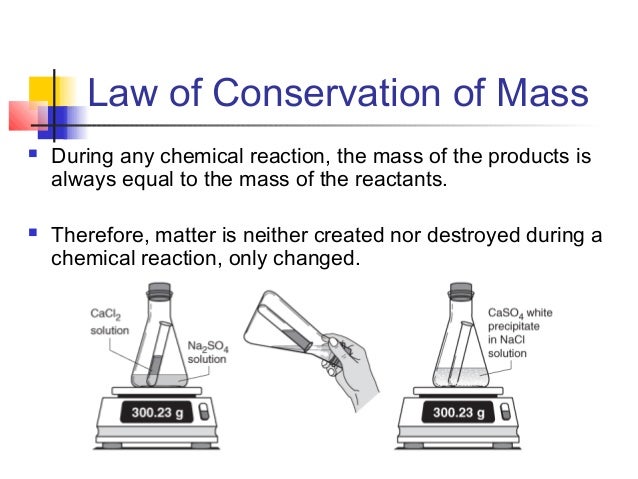

What mass of oxygen gas was produced in the reaction? _ g 1.6 According to the law of conservation of mass, if an atom of element A has a mass of 2 units, while an atom of element B has a mass of 5 units, what would be the mass of the compound A3B2? 16 units When one or more substances undergo a chemical reaction, the: Mass of the product and reactant remains the same In any chemical reaction or physical change, the mass of the products is _ the mass of the reactants. The remaining material has a mass of 14.2 g. Heat 15.8 g potassium permangante until no more oxygen gas is given off. X= _ g 33.38 A reaction of heating potassium permangante produces potassium manganate, manganese dioxide and oxygen gas. What is the total mass of ammonia and water vapor produced? _ g 13.73 A reaction of 22.85 g of sodium hydroxide with 20.82 g of hydrogen chloride produces 10.29 g of water and X g of sodium chloride. The remaining material in the test tube has a mass of 1.27 g. Suppose 5.00g of calcium hydroxide and 10.00g of ammonium chloride are mixed in a test tube and heated until no more ammonia is given off.

When one or more substances undergo a chemical reaction, the: Mass of the product and the reactant remains the same When heated, calcium hydroxide and ammonium chloride react to produce ammonia gas, water vapor, and solid calcium chloride.


 0 kommentar(er)
0 kommentar(er)
